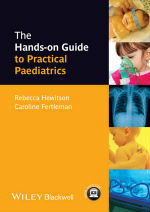Jonathon Betjemen is a 7-year-old boy who is brought to the emergency department by his father because he is having difficulty breathing. Jonny has a history of asthma and has been needing to use his salbutamol inhaler more frequently over the past few days. Today he was very breathless after running around outside with his brother, but this was not relieved by his normal salbutamol. He was still very breathless, so his dad gave him 10 puffs of salbutamol using his spacer; this helped slightly but his dad was still concerned about Jonny's breathing and brought him in to the hospital. Jonny also has eczema and is allergic to strawberries, peanuts and penicillin. His details are as follows:
Name: Jonathon Betjemen
DOB: 17/8/2006
Address: 42 Lissenden Road, Huddersfield
Weight: 24 kg
Hospital Number: 7867564
-
1. When you assess him, you find that he is tachypnoeic with a respiratory rate of 34 with deep subcostal and intercostal recession. His oxygen saturations were 91% in air, so the nursing staff have started him on 15 L of oxygen via a non–rebreath mask and he is now saturating at 100%. He is able to talk to you but cannot complete a whole sentence in one breath. What inhaled medication will you prescribe for him?
Show Answer
Correct answer:
His clinical features put him in the acute severe category for asthma according to the British Thoracic Society Guidelines. This means that he requires oxygen-driven nebulisers of bronchodilators.
For a child of his age, the dose of nebulised salbutamol is 2.5–5 mg. This nebuliser should be driven by oxygen as he currently has an oxygen requirement. Most nurses working in the emergency department will know this and do it automatically, but it may be worth writing this in the additional information if there is space for this on the drug chart. You should also prescribe oxygen on the 'as required' section of the drug chart.
-
2. Whilst he is part way through his first salbutamol nebuliser, you reassess him and find that his respiratory rate is 35 and he still has deep subcostal and intercostal recession. What will you prescribe next?
Show Answer
Correct answer:
Nebulised ipratropium bromide can also be given as his response to the salbutamol nebuliser has been poor. You can alternate between salbutamol and ipratropium nebulisers if the child is very breathless and not immediately improving following salbutamol alone. The dose of nebulised ipratropium for a child of this age is 250 micrograms.
Salbutamol and ipratropium can both be repeated every 20–30 minutes for the first 2 hours.
After this, ipratropium can be given every 4–6 hours as necessary and salbutamol as needed (usually every 1–4 hours depending on the child's clinical condition). You can continue giving salbutamol every 20–30 minutes, but if this is still required after several nebulisers it is a sign that the child is not responding and you need to involve your senior colleagues as the child may end up needed transfer to a PICU if they don't improve.
See the model drug chart for an example of how to prescribe these nebulisers.
-
3. Given that he has had an episode of acute severe asthma, what other medication should you prescribe for Jonny?
Show Answer
Correct answer:
He will need systemic corticosteroids. This is usually given as oral prednisolone (unless the child is unable to tolerate oral intake in which case you can give IV hydrocortisone). The dose of oral prednisolone for a child over 5 years old is 30–40mg (or 1–2mg/kg).
2 × 24 = 48mg but this is outside the suggested maximum and so you prescribe 40 mg.
He will need steroids for at least 3 days, so make sure that you prescribe it on the regular side of the drug chart as well as a stat dose.
See the model drug chart for an example of how to do this.
-
4. His breathing has improved following this initial burst therapy, but he will need to be admitted and given regular inhaled bronchodilators. Prescribe these on his drug chart.
Show Answer
Correct answer:
Initially, he is likely to need salbutamol every hour. Ipratropium is only to be given at a maximum of every 4–6 hours.
-
5. You go back to review him just before his salbutamol nebuliser is due. His saturations are 96% in air, his respiratory rate is 21, he has no signs of respiratory distress and has good bilateral air entry with no wheeze on auscultation of his chest. You decide to 'stretch' his salbutamol to 2 hourly nebs instead. Please prescribe this on the drug chart.
Show Answer
Correct answer:
The dose you are giving is not changing but the time interval is, so you have to cross out and sign the previous prescription before writing a new one underneath with the amended time. You mustn't just alter the times on the original prescription as this can cause confusion and may lead to a drug error being made. Some hospitals have a dedicated section in paediatric drug charts that allow you to alter the times in a different column without having to rewrite the prescription, but most drug charts don't have these. Check what is used at your particular workplace.

